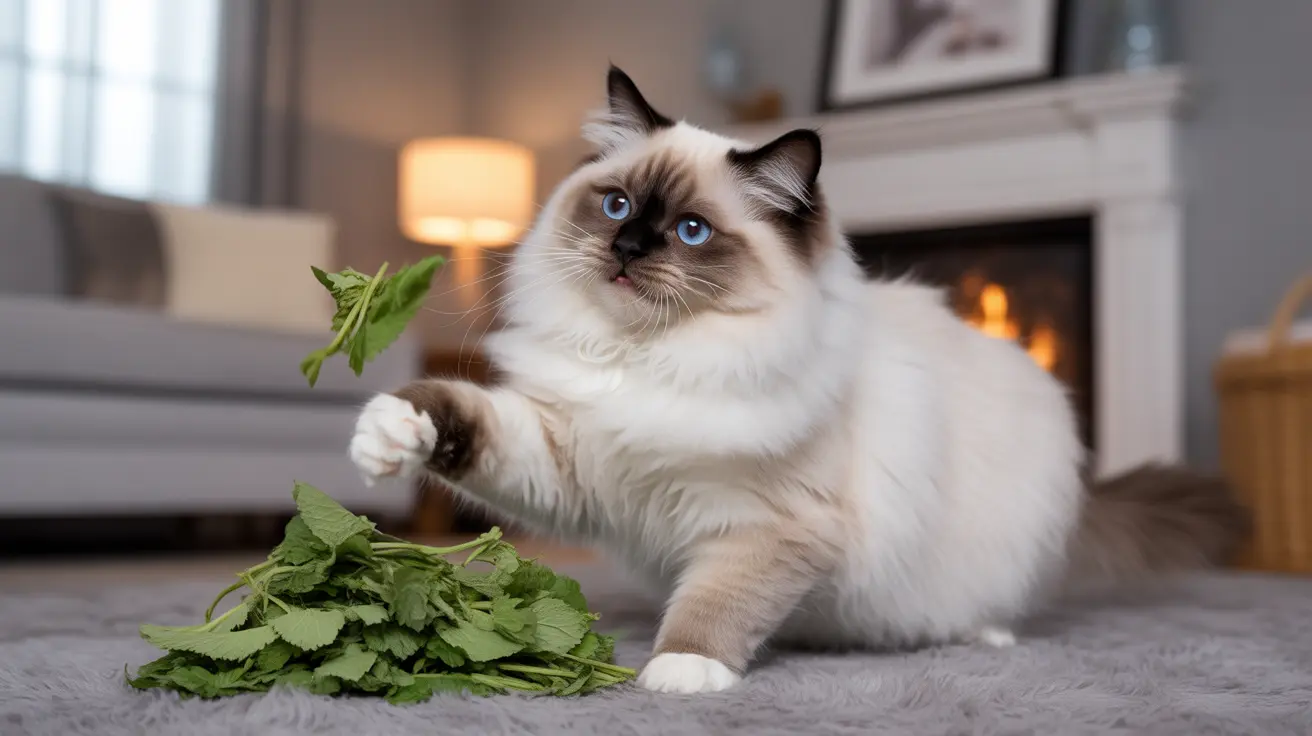If you're a cat owner dealing with a feline in heat, you might be wondering if catnip could offer some relief. This natural herb, known for its entertaining effects on cats, is often considered as a potential solution for managing heat cycle behaviors. Let's explore the science behind catnip's effects and whether it can truly help cats during their heat cycles.
Understanding how catnip interacts with cats in heat requires knowledge of both the herb's properties and feline reproductive biology. While catnip can certainly influence a cat's behavior, its effectiveness during heat cycles varies significantly among individual cats.
Understanding Catnip's Effects on Cats
Catnip (Nepeta cataria) contains nepetalactone, an essential oil that triggers behavioral changes in cats through their olfactory system. When cats smell this compound, they may exhibit various responses ranging from increased playfulness to temporary relaxation.
Importantly, about two-thirds of cats possess the genetic predisposition to respond to catnip, while others show no reaction at all. This genetic factor plays a crucial role in determining whether catnip might help during heat cycles.
The Science Behind Cats in Heat
Female cats typically enter their first heat cycle around 5-6 months of age. During this time, they display characteristic behaviors such as excessive vocalization, restlessness, and increased affection. These behaviors are driven by hormonal changes and the biological urge to mate.
Heat cycles can last anywhere from 1-3 weeks and may repeat throughout the breeding season unless the cat is spayed or becomes pregnant. This cyclical pattern can be stressful for both cats and their owners.
Catnip's Impact During Heat Cycles
When it comes to helping cats in heat, catnip's effects are limited and temporary. While it may provide a brief distraction lasting up to 30 minutes, it doesn't address the underlying hormonal drives causing heat behaviors.
Some cats might experience temporary relaxation after exposure to catnip, while others may become more excited or even aggressive. This unpredictability makes catnip an unreliable solution for managing heat cycle behaviors.
Safe Usage and Alternatives
If you choose to try catnip with your cat in heat, start with small amounts and monitor their reaction carefully. Always supervise your cat after exposure, especially if there are other pets in the household.
Consider alternative methods for managing heat behaviors, such as:
- Environmental enrichment through toys and climbing spaces
- Interactive play sessions
- Food puzzles and mental stimulation
- Consultation with a veterinarian about spaying options
Frequently Asked Questions
Does catnip calm cats that are in heat or only distract them briefly?
Catnip typically provides only brief distraction rather than true calming effects. The response usually lasts 10-30 minutes and varies significantly between individual cats.
Why do some cats in heat become more playful or aggressive after smelling catnip?
The active compound in catnip (nepetalactone) can trigger various behavioral responses. Some cats become more energetic or aggressive due to increased stimulation of their nervous system.
How long does the effect of catnip last for cats experiencing heat behaviors?
Catnip's effects typically last 10-30 minutes, followed by a refractory period during which cats won't respond to additional exposure for about two hours.
Can catnip replace spaying as a way to manage a cat's heat cycle?
No, catnip cannot replace spaying. It offers only temporary distraction and doesn't address the hormonal aspects of heat cycles. Spaying remains the most effective long-term solution.
What are safer alternatives to catnip for helping a cat cope with being in heat?
Safe alternatives include environmental enrichment, interactive play, positive reinforcement training, and consulting with a veterinarian about medical options. Some cats may respond to other natural herbs like silver vine or valerian root.
Conclusion
While catnip might offer temporary distraction for cats in heat, it's not a reliable solution for managing heat cycle behaviors. The most effective long-term approach remains spaying, combined with environmental enrichment and proper veterinary care. If you're struggling with a cat in heat, consult your veterinarian for personalized advice and management strategies.






